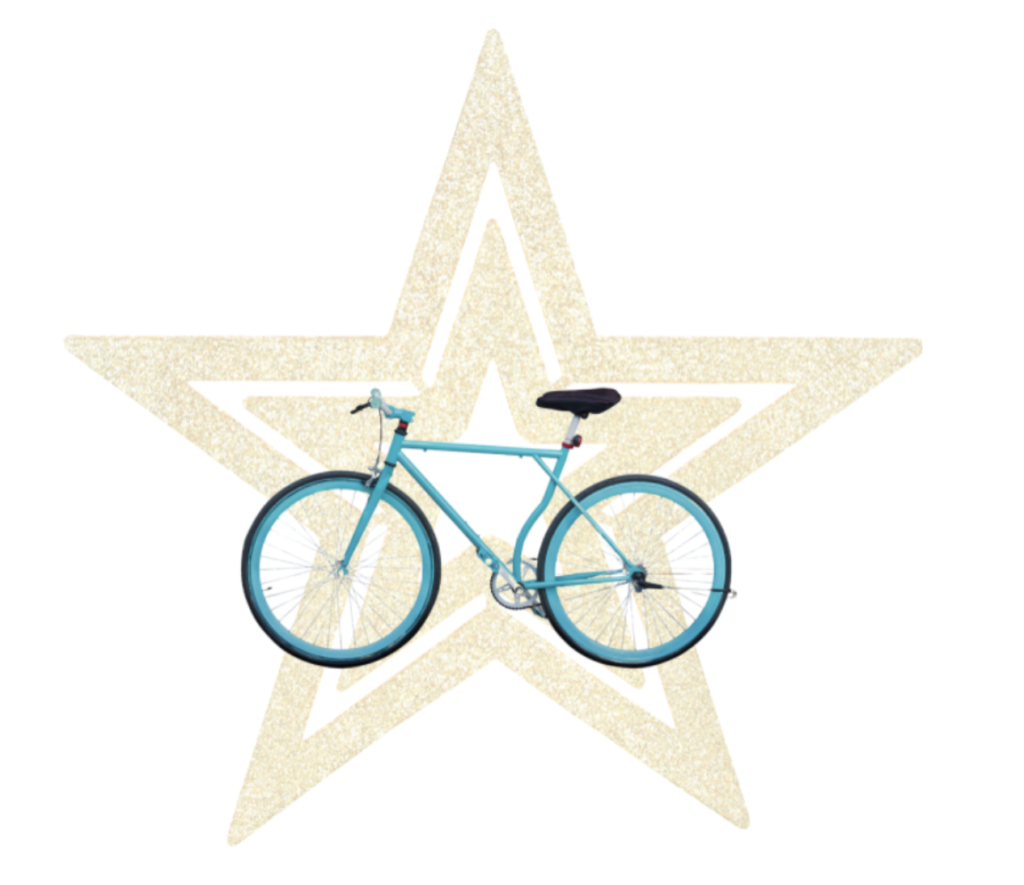
Getting ready for a century ride or epic cycling event is actually a lot of work. You’ve been following a cycling training plan for weeks now, but the logistics matter too! The closer you get to your century, the more clear it becomes that even one small misstep can really ruin your experience at the entire event.
Here is our list of 7 key ways to guarantee the best possible ride experience at your next event.
#1 Reservations & Rentals Check (14 Days Prior)
If your event involves traveling to a different location, this significantly amplifies the early portion of your logistics.
If you have a flight, or a hotel, or even a rental car, then you’ve got some serious planning to do. And if you have all three? Well, you had better be ready.
Make sure that you have the proper reservation information saved readily on your phone. Not just in your inbox, but actually copying and pasting the confirmation number into calendar events for the day and time that you’ll be there.
For example, take that rental car confirmation number and create an event on your calendar to trigger at the time that you are disembarking the plane. This way, future you will have the information s/he will need without extra work.
If you are flying, then make sure you sign up for text notifications on the flight status. Add airport travel time reminders to your calendar so that you won’t be late. All that extra time to deal with your bike and checking that in safely with the airline. Have your frequent-flyer number and credit card ready to deal with all relevant Logistics and additional expenses.
Bonus Item: Find and save the phone number and information for a local bicycle shop in case you need it.
#2 Key Contact Information Check (12 Days Prior)
Traveling to this event means being a part of something bigger than just a regular ride. Make sure that you have saved the relevant information to your contacts so that you can easily access that information in the future even without an internet connection.
Cut the event side, you’ll want to know not only the agenda for what’s going to happen but also who the point of contact is. Be sure to save the phone number as well as an email address.
If your event involves an airport pick-up or rental car, make sure you have that separate information dialed in as well and that you’ve sent your itinerary over according to the information you captured in step one above.
Many events use a digital communication app or product for the weekend. Be sure to have that installed in your phone with your relevant information in it as well. If you haven’t done so already, make sure that it works! Send a message, read a message, like and reply to a message — just to know that everything is operating properly. This is not something you want to be doing on the morning of your event.
Of course, you should have your emergency contact information also readily available. Especially if it’s not someone who you would normally identify. having all of this line up ahead of time is critical for safety and peace of mind.
#3 Check the Weather ( 10 Days Prior)
you probably don’t need a reminder to do this, as it’s likely you’ve been checking it for weeks! Most extended forecasts are made approximately 10 days in advance, but the accuracy of those forecasts very wildly.
Use the information from the forecast to plan accordingly. Working macro from micro, start first by identifying key factors like sunrise and sunset. Capture the lows and highs of those days as well, which will set some baseline expectations about pre, during, and post-ride clothing needs.
Finally, look at the weather for the time of your event. You should continue to update this once a day as the event nears. At at least right now you have a 50% chance of knowing what the day is going to look like.
this information is critical to make sure that you have all of the requisite equipment end gear needed to be safe and successful. Some of these items take time to cure, so having the information earlier gives you extra time to solve any problems.
Balancing the forecast against the macro numbers you have, you can begin to narrow down your clothing choices appropriately (see #4 below).
#4 pack your gear
now that you know what the weather will be, and you have a good sense of the right parameters, you can begin sorting out your gear.
Before you start putting anything into a bag or suitcase, use this visual packing method first.
Take everything you think you might need and put it in a pile on your floor. Picking it up from the ground, use your bed as a display case for the clothing that you will be bringing.
Riding for two days? Two jerseys go in the upper left-hand corner, and to bib shorts go in the top middle. Two pairs of socks go on the right!
Anticipate cooler mornings? A vest and arm warmers go in the left-hand corner.
Always feel safer with gloves on? Put those in the bottom center.
Concerned about inclement weather? Bring a rain vest for a jacket in the bottom right.
Laying things out visually allows you to make sure you have everything you need. You can easily reference your list and the items displayed on the bed in front of you. If needed, you can add and subtract items until you feel just right. Only then should you begin packing things into your bag. This is the best way to make sure that you have everything you need and you haven’t left anything behind.
Side Note: Always bring an extra set of kit and additional warm weather clothing. Once you stopped writing, even on warmer days, your body can get quite cold. You’ll want the gear just in case. Of course, if you’re going to be going to a warmer climate, be sure to pack the sunscreen as well.
#5 Your Final Workouts
Let’s not forget that you actually need to be ready to ride when you hit the ground! We don’t want to shut down your training too soon, as you’ll start experiencing the effects of losing your fitness. Depending on the level of your peak fitness and the demands of your event this may or may not be an issue. Regardless, you have a habit of training and disrupting that can simply affect you mentally if not physically.
This is why we recommend having a scripted set of training sessions for the final seven days. You will need to block out the days where you’re traveling, but setting this plan in place ahead of time ensures that you will comply with what’s written.
In general, oer the last seven days you want to stay active in a general sense. Every session you can do on your bike, the better. If not your bike, then perhaps an indoor bike or to extradite you have at home (so smart to have more than one bike!).
if you can’t fight, stay active with the short run or similar aerobic activity. If anything, this can help you stay sane. The only real caveat here is that we don’t want to do anything that’s risky. A new event is right around the corner and there’s plenty to be done. If you couldn’t train whatsoever in the few days leading up to the event, you would still be okay. Unhappy, but okay.
In terms of intensity, most of the sessions should be aerobic in zone 1 or zone 2. If your event involves play intensity efforts, then two of your sessions should include short bursts of intensity at race pace effort with plenty of rest. An example for example, twice through four minutes at threshold effort with six minutes of recovery.
#6 Pack the Bike
With your last few sessions done, you can go ahead and pack your bike. You can make this process a lot easier by blocking out the time in your calendar to get this done. Perhaps you can use that day’s workout window to get this done.
Before you pack your bike, give it a once-over. Clean it up and make sure that everything on the bike is in good condition. If there’s a problem, you want to be able to solve it now instead of in a new town or city.
Open up the case to have all of your tools ready. Have a decent-sized ziploc bag to hold any parts you remove, and another one for the tools. Each tool that you use to disassemble your bike, when finished, should go into the ziploc bag that you’re taking with you to the event. This way you know that you will have all of the tools you need at your disposal for everything that is on your bike.
Take your time to do this right, ensuring that your bike is safely secured. Regardless of the type of case that you have, improperly packing your bicycle adds significant risk to the travel equation.
Avoid packing extraneous heavy or sharp items inside with your bicycle. An empty bottle or two, for example, is fine. Adding your nutrition powder and energy bars end a bicycle pump is not encouraged. This adds to the weight of your bag and can jeopardize the stability of the bike itself. Do your best to keep those extra items in your checked bag.
Side note: We recommend traveling with your helmet, shoes, and pedals in your carry-on bag. In the event that your bike doesn’t make it, at the very least you have the minimum required to hop on a new bike if you’re able to secure one on site.
In addition to your bike, be sure to also pack the extraneous items that orange clothing but are related to cycling. This goes for your computer and requisite charging cables. Safety lights, sunglasses, spare tires, etc. Perhaps even the cleaning rag. Note that you cannot travel with co2 cartridges on an airplane, so have a plan in place to secure those when you arrive.
#7 Test the Bike
Once you’ve arrived and made it safely to your lodging, it’s time to put the bike back together again. Even if you pick your ride up on-site, it’s time to give it a once-over.
You have time now before the event to fix any problems you can find. If you wait till the morning of the event, you run the risk of having to ride with that problem or not being able to ride it all.
Do your best to put the bike together safely and get outside to give it a short ride. Go through all the gears, make sure the brakes work, and that everything feels fine. Check the tire pressure and attach all the safety lights.
Your goal here is to go to bed the night before the ride with everything in place, 100% ready to go. Guaranteed you’ll sleep better.
Happy Riding!

Leave a Reply